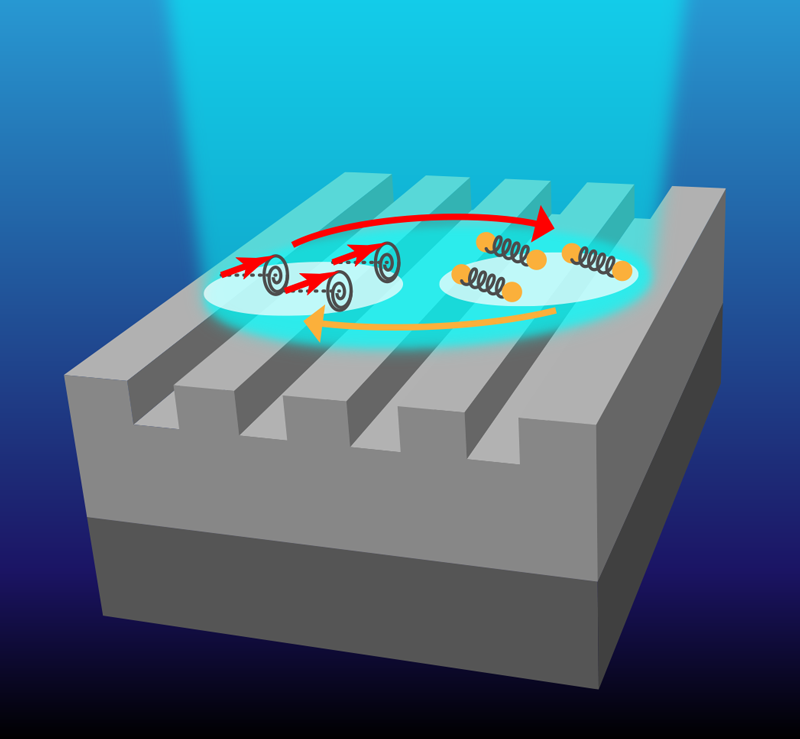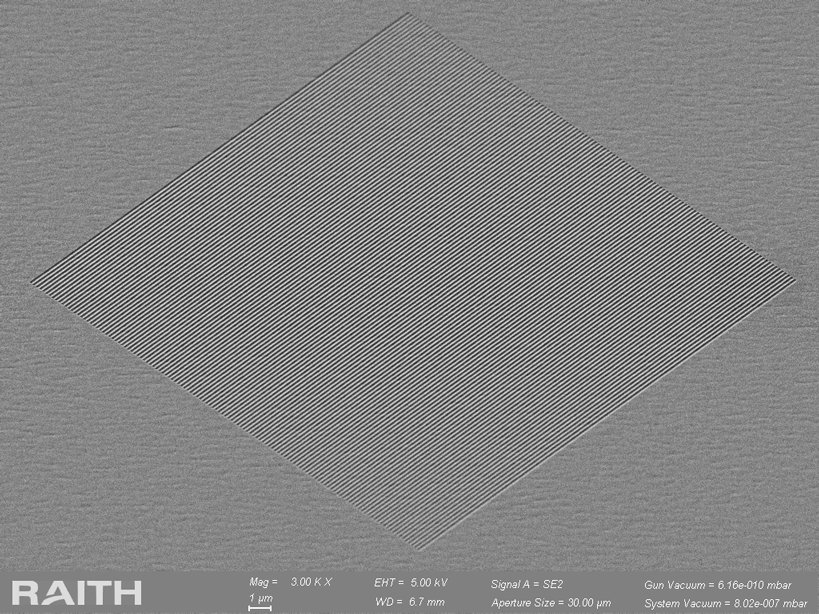
In a world of continuously increasing data volumes, we need new and efficient tools for data processing. In a magnetic material, the vibrations of the crystal lattice (phonons) and the oscillations of the magnetic moments (magnons) represent two types of excitations that could serve as efficient information carriers for conventional, quantum, and neuromorphic computing. They become especially attractive when strongly coupled to each other, but achieving this coupling is a challenge. The international team of researchers has achieved this goal in a nanoscale magnetic structure produced with a VELION by the RAITH GmbH.

In a magnet, the vibrations of atoms in a crystal lattice and the oscillations of the magnetic moments about a magnetic field are two prospective candidates as information carriers at the nanoscale in energy-efficient devices. These excitations are called acoustic waves (phonons) and spin waves (magnons), respectively. As their propagation does not require the transport of electric charge, they do not suffer from electrical resistivity that would cause losses and heating typical for conventional electronics. Their frequencies of up to 100 GHz and wavelengths well below 1 micron suggest that wave-based data processing can be radically faster, smaller-scale, and more energy-efficient than today’s process. However, reliable tools for information manipulation need to be elaborated to leverage these advantages. An advantage here is the fact that acoustic waves may switch spin waves and, vice versa, spin waves may be the source of acoustic waves. This requires, however, a coupling between them that is as strong as possible.
The present work by an international team of scientists from Germany, Russia, United Kingdom and Ukraine is the first time that the strong coupling regime between an acoustic and a spin wave has been entered in an extended metallic magnet. To achieve this goal, the surface of a ferromagnetic film – in this case an alloy of iron and gallium, epitaxially grown in the University of Nottingham on a GaAs substrate – was suitably patterned into a grating with 200-nm period and a depth of several nanometers using the VELION FIB-SEM system. This pattern serves for spatial shaping of both acoustic and spin waves. Their strong coupling is provided by spatial matching at the resonance condition when the frequencies of the acoustic and the spin wave coincide. These results open the way for long-distance propagation of the spin wave due to the coupling with the acoustic wave, as required for high-frequency data encoding and transfer.



